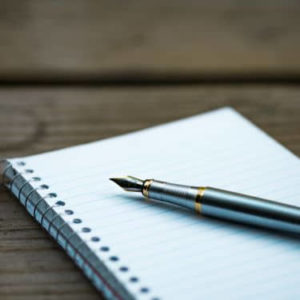Remote viewing, in essence, is the practice of seeking impressions about a distant or unseen target using extrasensory perception (ESP). So, what do we need to make this happen?
Remote viewing typically requires minimal tools and equipment. Some commonly used items include a quiet and comfortable space, a pen, paper, a computer or recording device for documenting sessions, and a target or cue to focus on.
While some practitioners may use meditation or sensory deprivation methods, the essential tools primarily focus on creating an environment conducive to concentration and information gathering.
In this article, I will explain the tools and equipment needed for a successful remote viewing session.

How Is Remote Viewing Completed?
The remote viewing process can largely be broken down into steps. It begins by entering a relaxed mind, often achieved through meditation or mindfulness. Once in this state, the viewer would focus on the target, which could be a specific location, object, or event, without any prior knowledge about it.
The viewer then starts to perceive impressions or sensory information related to the target. These impressions are often vague initially and may take the form of shapes, colours, textures, emotions, or other sensory data. As the viewing session progresses, these impressions become more specific and coherent.
These perceptions are then documented, usually by writing or drawing them on paper. Doing this without analyzing or interpreting the information during the session is important, as this can lead to “noise” or inaccuracies. After the session, the viewer can then analyze and interpret the data, often with surprising accuracy.
Remember remote viewing is a skill that can be developed with practice. Just like any other skill, some people may find they have a natural talent for it. In contrast, others might need more training to enhance their abilities.
Does Remote Viewing Require Special Equipment Or Tools?
Regarding physical equipment, remote viewing doesn’t require much – the most important tools are your mind and the ability to focus and relax. As I’ve mentioned previously, a quiet and comfortable space, a pen, and some paper are often enough.
The quiet space is to minimize distractions and allow a deep state of concentration, while the pen and paper are used for documenting your impressions during the session. Sometimes, a computer or recording device may be used to document the session, especially if you prefer to verbally describe your impressions.
The “target” or cue is also crucial. This could be a photograph, coordinates, or a simple descriptive phrase. The viewer mustn’t know too much about the target to avoid preconceived notions or assumptions.
Some viewers might choose to use additional tools like meditation aids or incense to help achieve a relaxed state. However, these are not mandatory and can vary based on the viewer’s personal preferences.
In conclusion, the key “equipment” for remote viewing lies within the viewer. Their mental capability to perceive and interpret information about a distant or unseen target, more than any special tool or piece of equipment, determines the success of a remote viewing session.
Can Tools Assist My Remote Viewing?
While the mental aspect is crucial in remote viewing, there are some tools and aids which can potentially enhance your remote viewing experience.
- Meditation CDs or Apps: These can help guide you into a relaxed and focused state necessary for remote viewing. There are numerous meditation aids available, some even designed specifically for remote viewing.
- White Noise Machine: Some viewers find white noise helps them concentrate better. A white noise machine or an app can help create a distraction-free environment.
- Journal: Keeping a dedicated journal for your remote viewing sessions can help you track your progress. Depending on your preference, this can be a simple notebook or something more elaborate.
- Timer: A timer can be used to set a specific duration for your viewing session. This can help prevent sessions from dragging on too long and causing fatigue.
Remember, these tools are not essential but could assist some individuals in achieving a more successful remote viewing session. It’s about finding what works best for you as an individual.
Essential Items for Effective Remote Viewing
- Quiet Space: A quiet and distraction-free environment is essential for maintaining focus during your remote viewing session.
- Pen and Paper: These are necessary for documenting your impressions and perceptions through words or sketches.
- Target or Cue: This could be a photograph, coordinates, or a descriptive phrase, which you will focus on during your session.
- Comfortable Seating: A comfortable chair or cushion can help you maintain relaxation and focus over an extended period.
- Meditation Aid: An app or recording that guides you into a relaxed state can be beneficial, especially for beginners.
- Timer: This tool can help keep your sessions structured, preventing them from dragging on and causing fatigue.
- Journal: Keeping a record of your experiences and observations can help you track your progress and understand patterns in your remote viewing abilities.
Final Mindful Thoughts
In conclusion, while remote viewing doesn’t require extensive physical equipment or tools, it does necessitate a focused mind, a quiet environment, and a method for recording observations. Tools such as meditation aids, timers, and journals can enhance the experience and facilitate progress tracking, but they’re not mandatory.
The key to successful remote viewing lies in the viewer’s mental preparedness and ability to perceive distant or unseen targets.
So, when it comes to equipment or tools for remote viewing, remember that the most vital tool is your mind. Knowing how to use it effectively can significantly impact your remote viewing experience.
